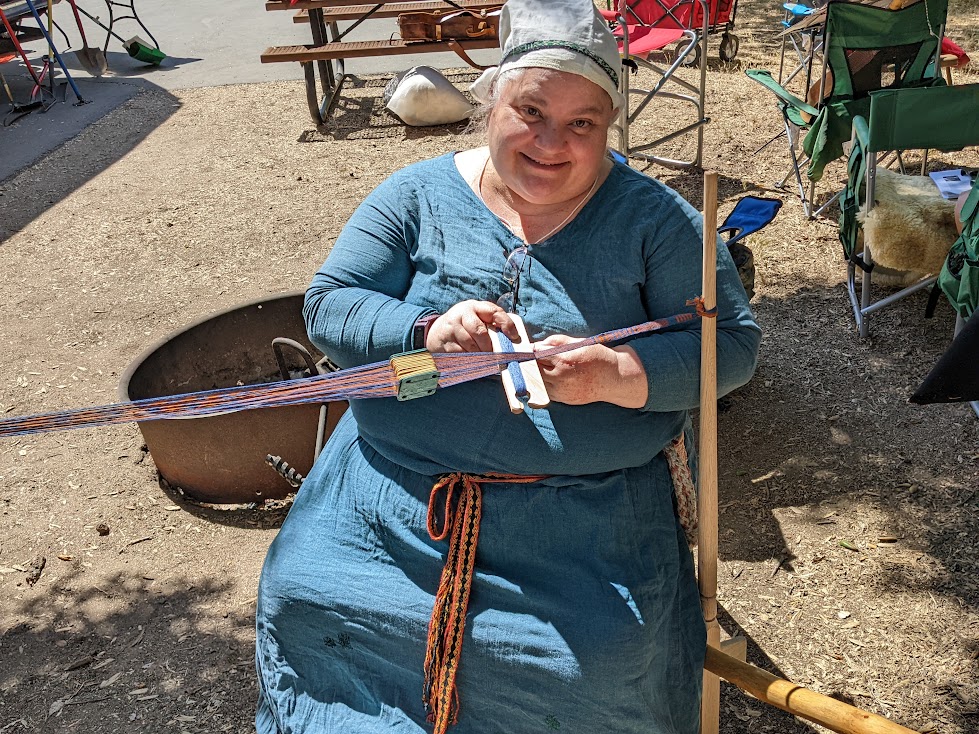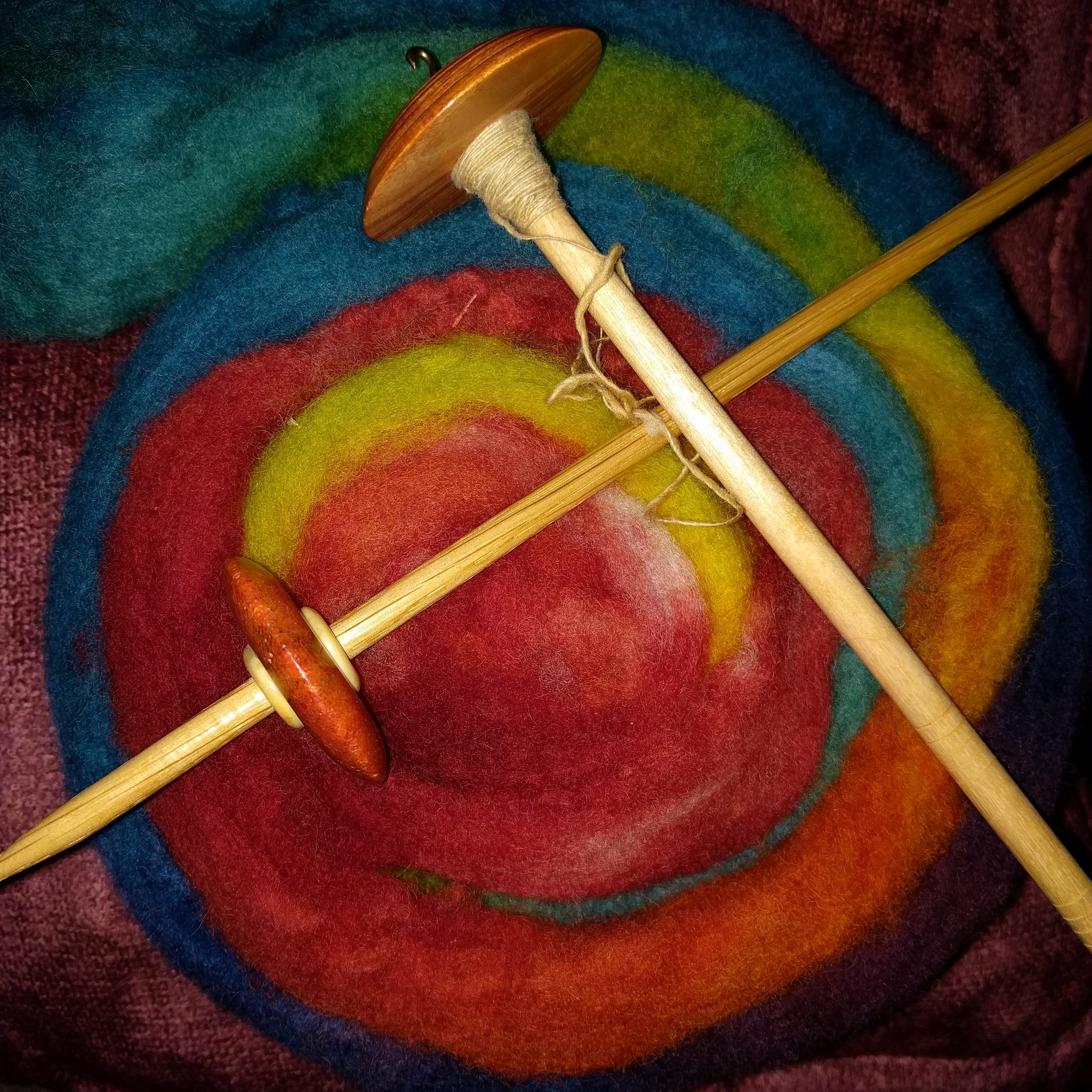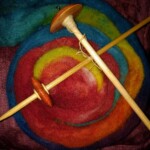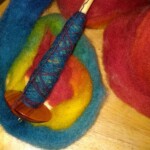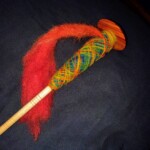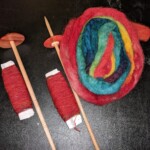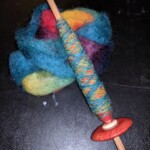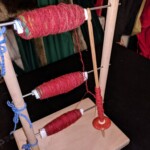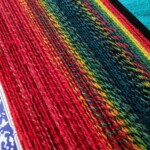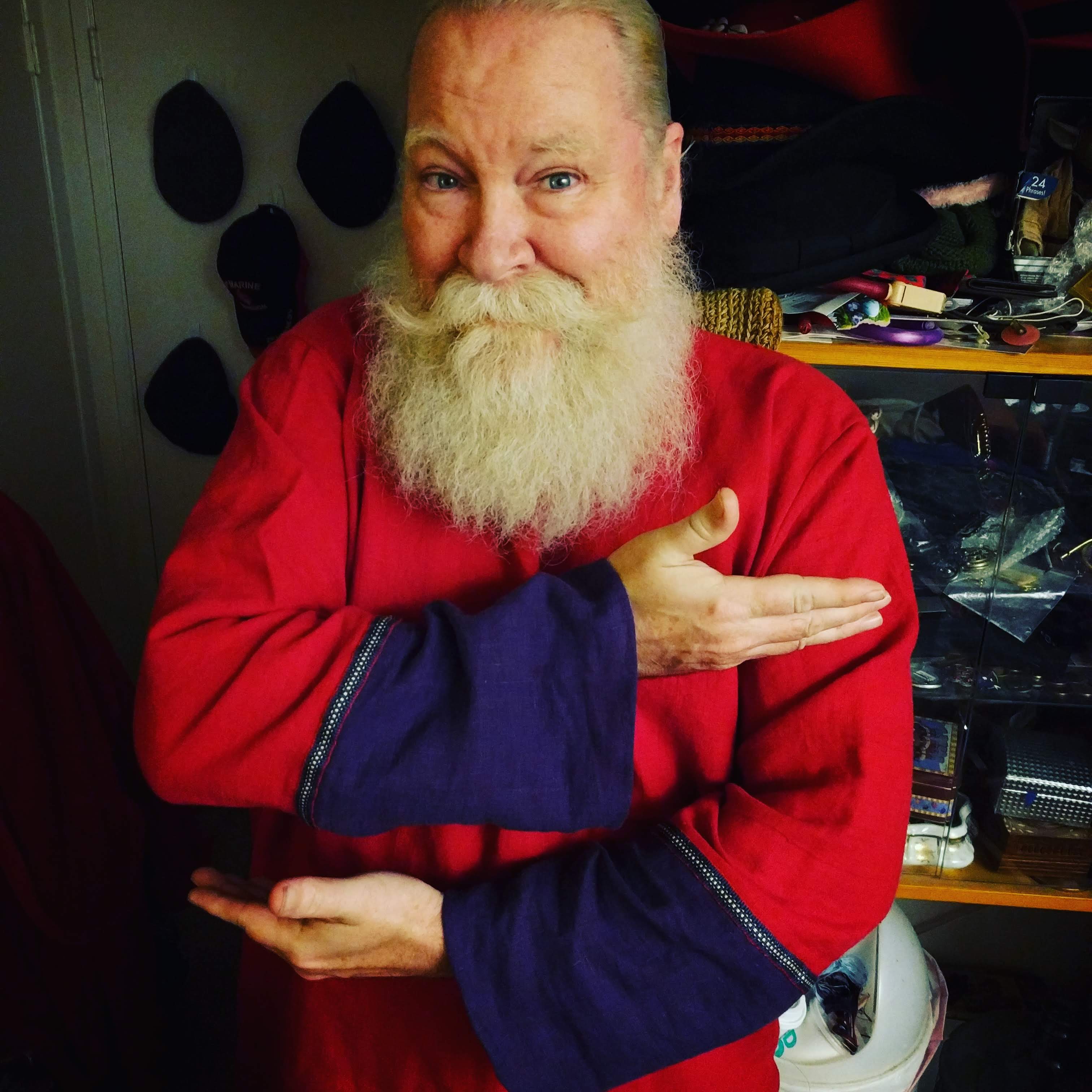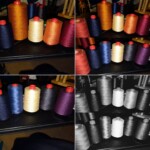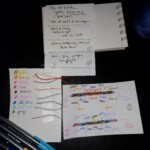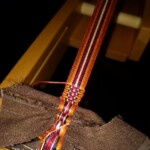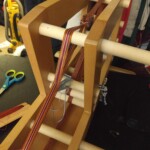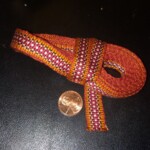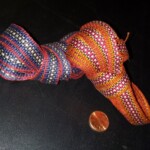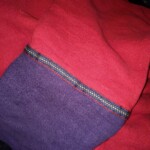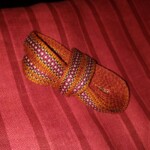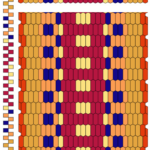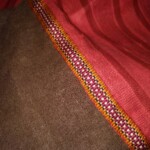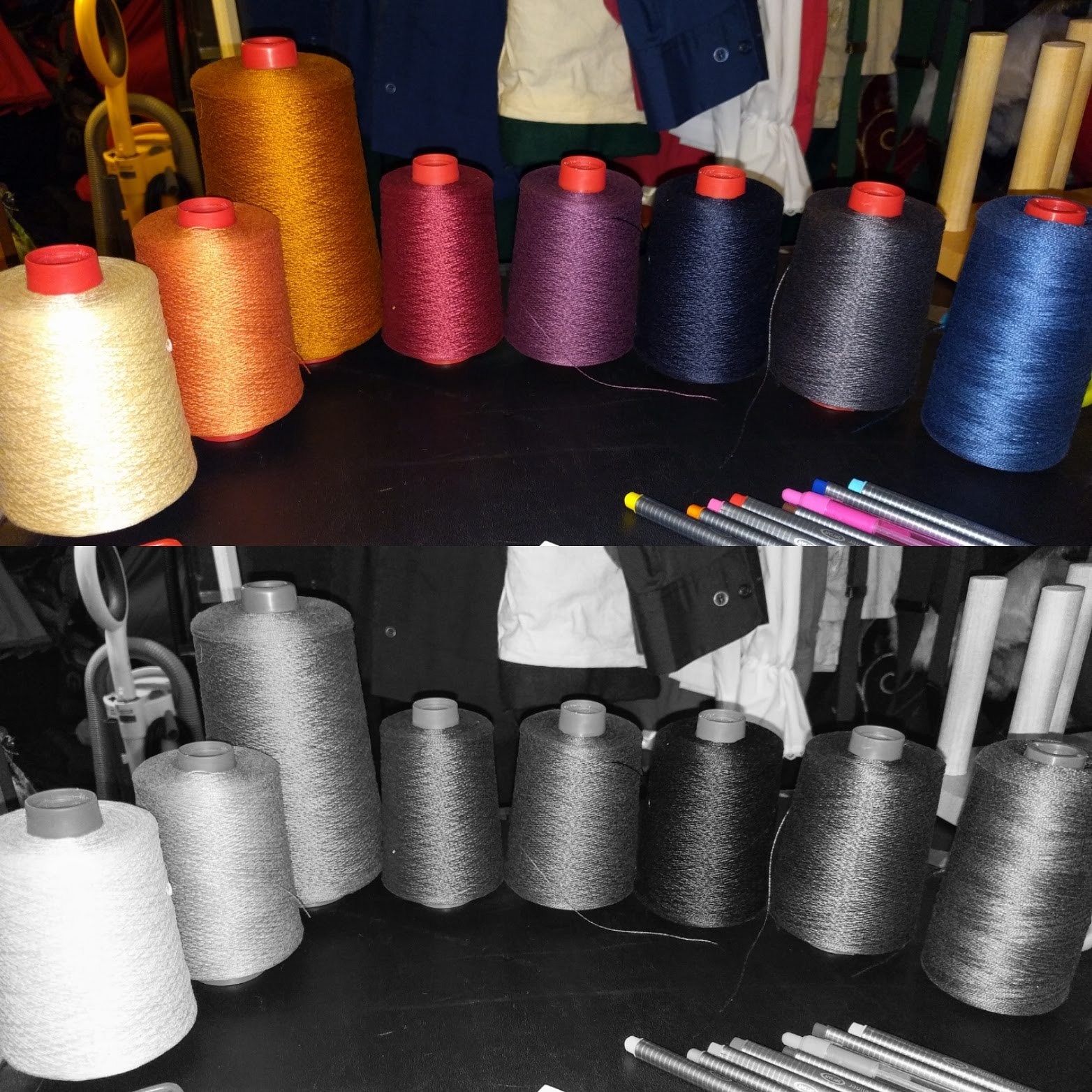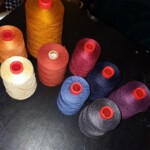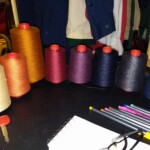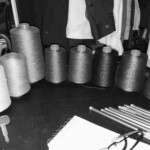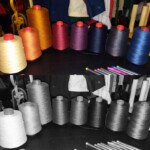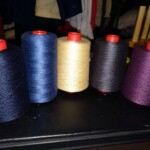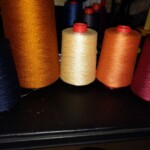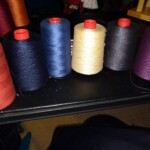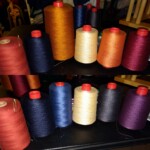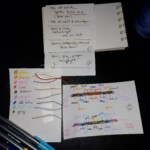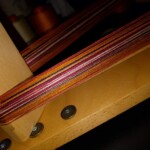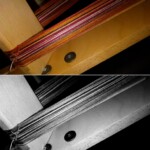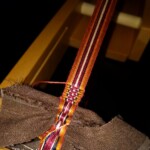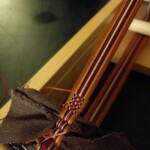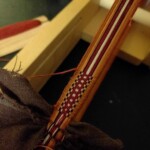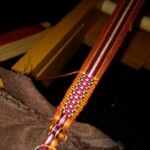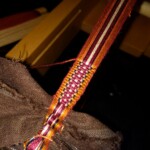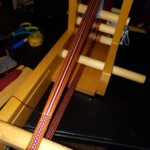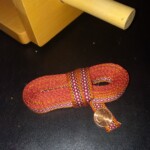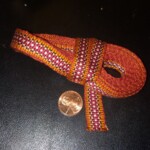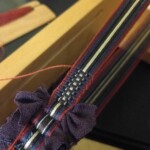So You’d Like to Start to Weave
I’m occasionally asked about weaving in general and what I’ve noticed is that many people don’t know that there are SO MANY different kinds of weaving options! To make it easier to explain, I thought maybe it was time for me to work on my typical answers.
Let’s start with basic structures and some vocabulary, along with some examples.
- Warp – These are the threads that typically run vertically, from “top to bottom” or from “close to far” from the weaver’s point of view.
- Weft – These are the threads that typically run horizontally, from “left to right.” Bonus joke: You can remember the “weft thweads wun weft to wight.”
- Warp-Faced Fabric – Primarily the warp threads show. The weft is hidden “inside” the woven structure.
- Weft-Faced Fabric – Primarily the weft threads show. The warp is hidden “inside” the woven structure.
- Balanced-Weave or Plain Weave or Tabby Weave – Typically both the warp and weft are visible. They might still have variations in their structure (a little more here, a little less there), but both are visible in some way throughout.
Many English-speakers from North America and European traditions might assume that all looms are large structures that frame and hold all the threads while you are weaving. Maybe, you picture a large floor loom to work on.

Or maybe you’ve seen table-top, smaller versions similar to these types of floor looms.

These are all often used to weave the fabric that shows off both warp and weft threads. It could look like a tablecloth, a scarf, or the fabric in your jeans (twill). They can range in price from “mostly accessible to many budgets” to very expensive. And they can range in size from portable to very large. There are often second-hand looms for bargain prices in your area, and they may (or may not) need repairs before they are usable. The mechanisms to lift and lower threads are typically part of the loom. Setting up the warp will usually require threading the individual threads through eyes or loops or slots. The variety in the fabric textures are then controlled by which threads are lifted or dropped in which order.
What about tapestries? How are they woven? If you do a google search for images of tapestry looms, you might see examples like these.
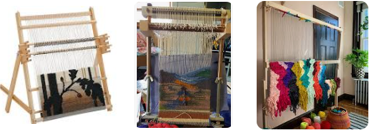
These are weft-faced fabrics. The warp threads are often set slightly wider so that as you add the weft, you can pack it tightly “at the bottom” of the loom. You have lots of freedom to add colors and textures in various directions. You will be hand-weaving those weft threads into place, so this is a very manual technique. Put the vertical warp threads on, make certain they are tight, add the weft threads according to your own creativity.
How does a warp-faced fabric look different then? If you look up card-weaving, tablet-weaving, inkle weaving, or even tape weaving, you may see photos like these.
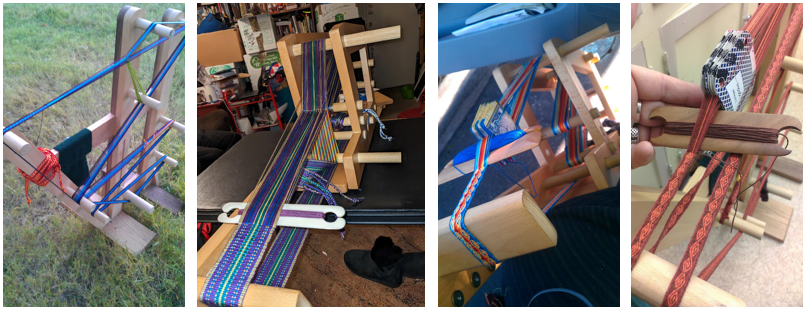
While each of these was woven on a small loom (easy to seatbelt the loom into my car’s passenger seat), they can also be woven on DIY “looms” with just anchor points, c-clamps, carabiners, even tied to a belt. The weft is nearly completely hidden from the finished “ribbons, tapes, or bands” with the exception that sometimes you can see it on the edges of the bands.
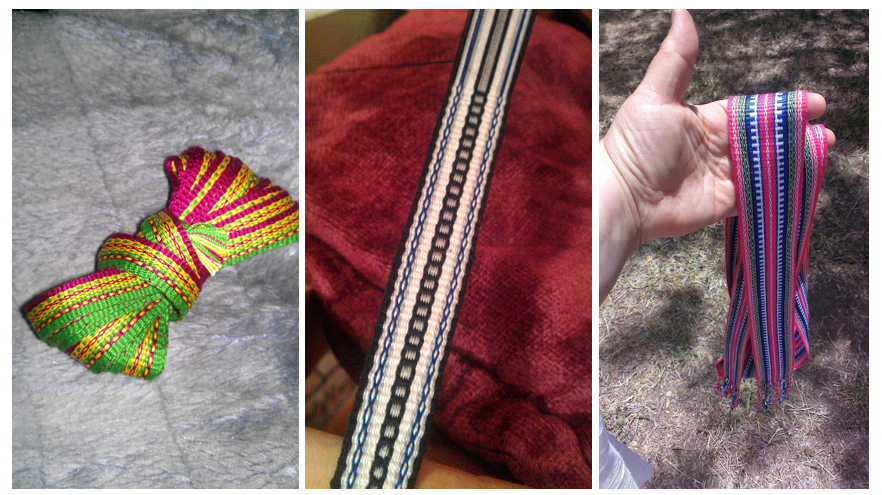
And while inkle-weaving or tape-weaving is a great way to weave some thing very quickly, at first you are mostly limited to horizontal and vertical lines (with a brick-pattern line-up from row to row/pick to pick, which is how you can also get chain shapes). There are other techniques that can expand your design elements, but those are more intermediate/advanced skills.
Card-weaving or tablet-weaving can quickly do complex patterns and/or designs with letters or figures. These are some “threaded in” patterns, and the far right (yellow and green) one shows some of the complex designs possible with figures.

Another example of warp-faced bands comes from an ancient tradition passed down for centuries (possibly for millennia) among many indigenous communities in South America. My studies of Backstrap Weaving have been narrowly focused on the traditions from the Andes and from the Cusco region of Peru (there are other backstrap traditions and techniques around the world).

Beyond just the pure joy of the design possibilities and depth of history of this weaving, it has been the first weaving style I found as easily portable as spinning yarn on a simple spindle.
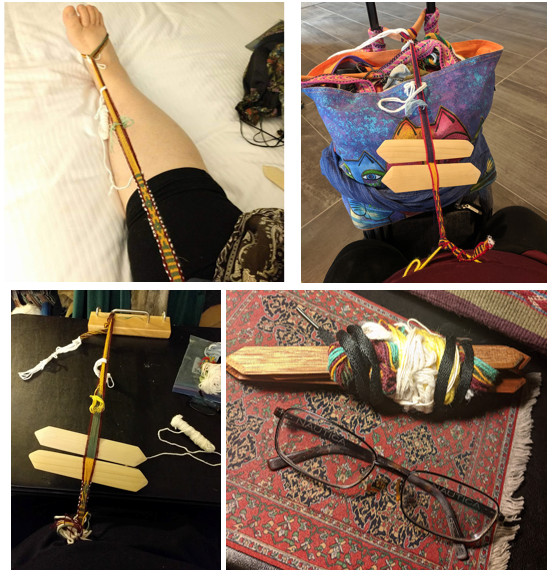
I haven’t even talked about tools that can do more than one type of structure. For example, you can use rigid heddle looms to create either plain or twill structures, or weave narrow bands similar to the inkle weaving pictured earlier.

This is still not an exhaustive list of all the ways someone can weave. But these are some of the categories many people think of at first for weaving. Weaving has almost as many styles as there are groups of humans that have ever had the need for textiles and decided to do something about that.
So you’d still like to start somewhere, right? One option: look for a weaving guild and try out equipment that someone near you is using and can demonstrate to you. You can find books and videos about various DIY weaving equipment and starter techniques. You can look up other weaving phrases like cardboard looms, peg looms, warp-weighted looms, or frame looms. You can go big or small.
But no matter what, try something more than once. And always remember: Practice Based Skills Require Practice. No one will master any string skill immediately. Give yourself the grace to make mistakes and learn at a variable pace. And please try to have fun.
